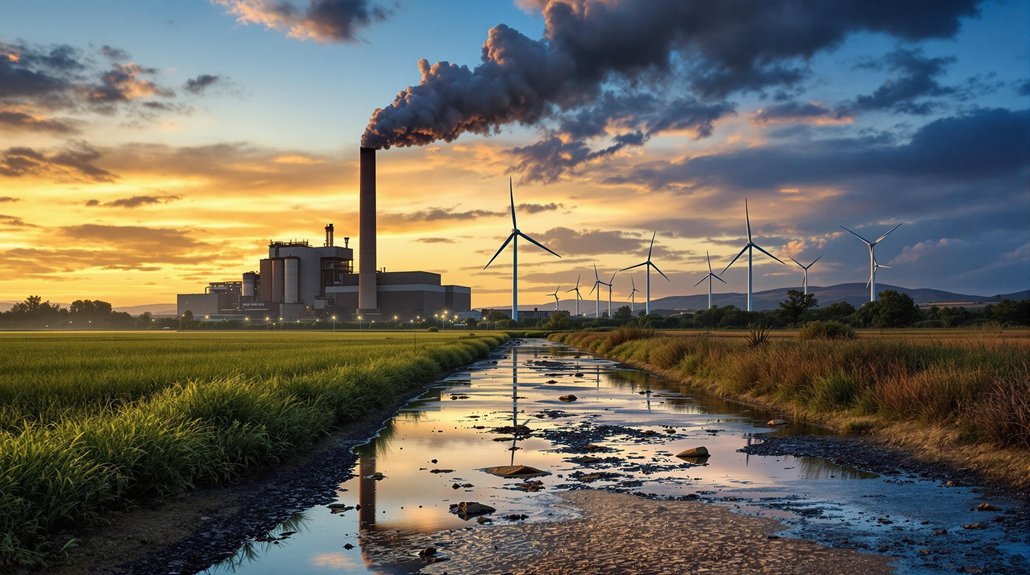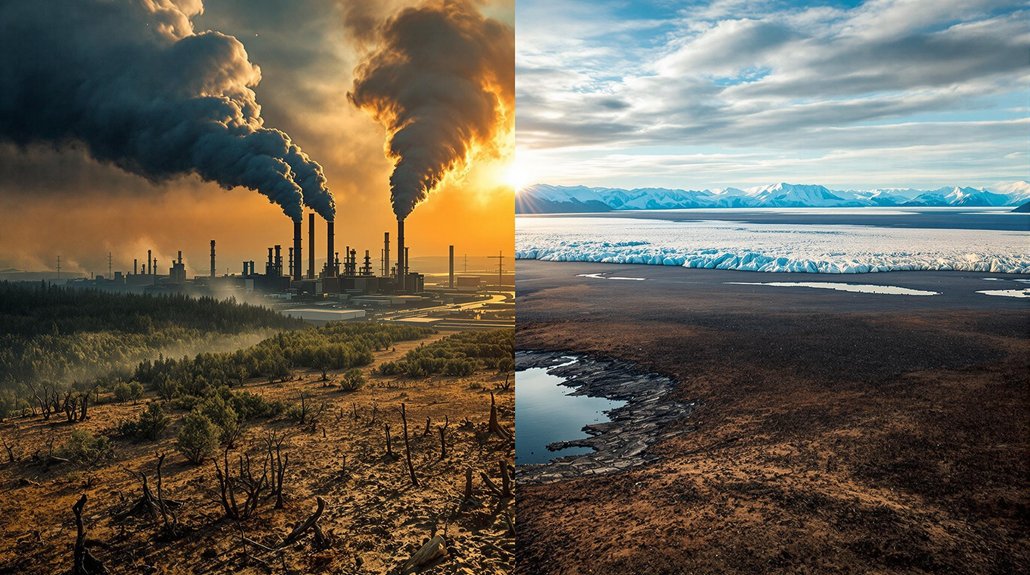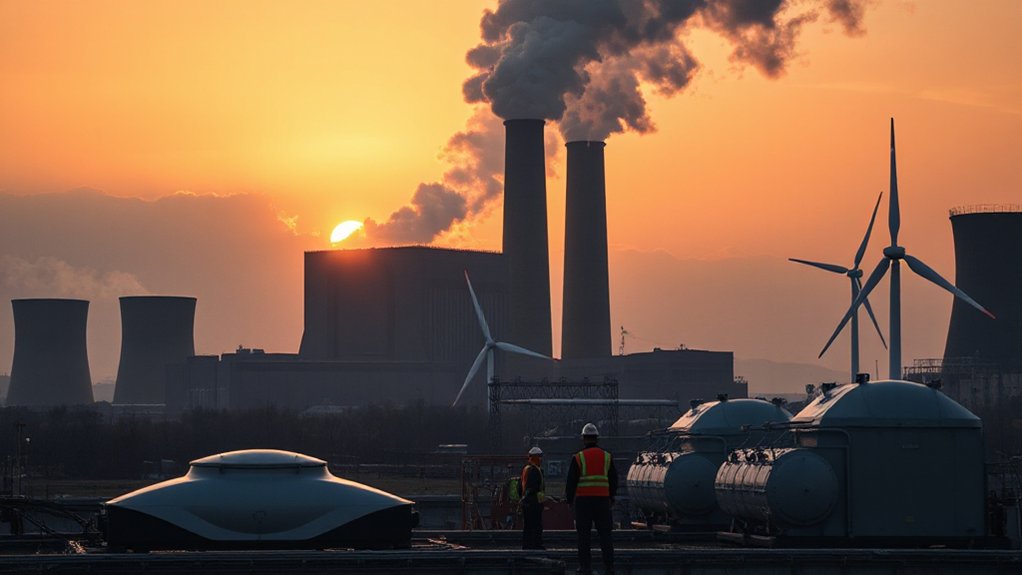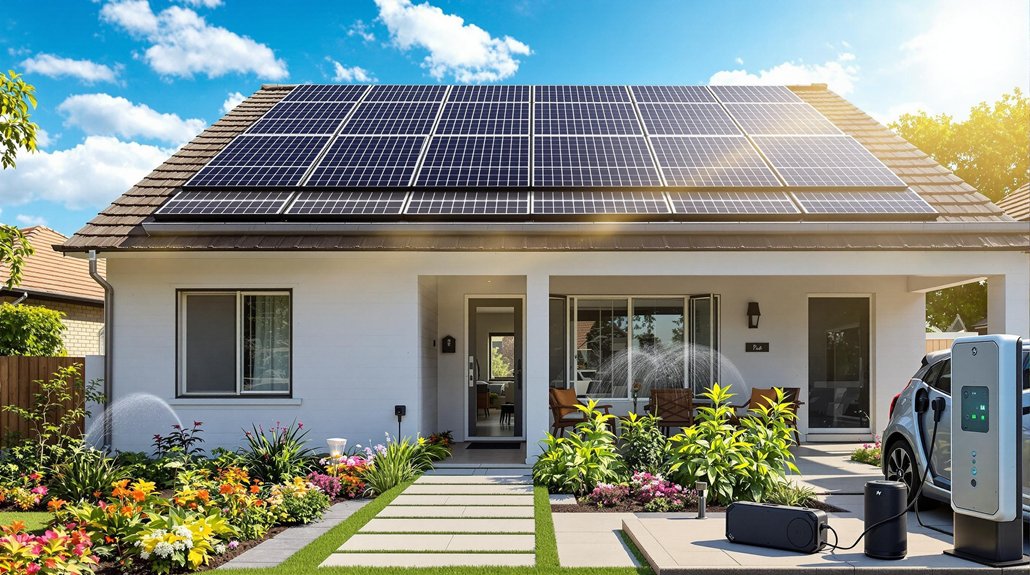Environmental pollution occurs when harmful substances contaminate our natural surroundings. It takes many forms, including air, water, soil, noise, and light pollution. Common pollutants like carbon dioxide, microplastics, and heavy metals originate from industries, vehicles, and agriculture. These contaminants damage ecosystems, harm wildlife, and cause serious health problems in humans. Solutions include regulations, improved waste management, and renewable energy. The challenge affects everyone, with consequences that extend far beyond what’s immediately visible.
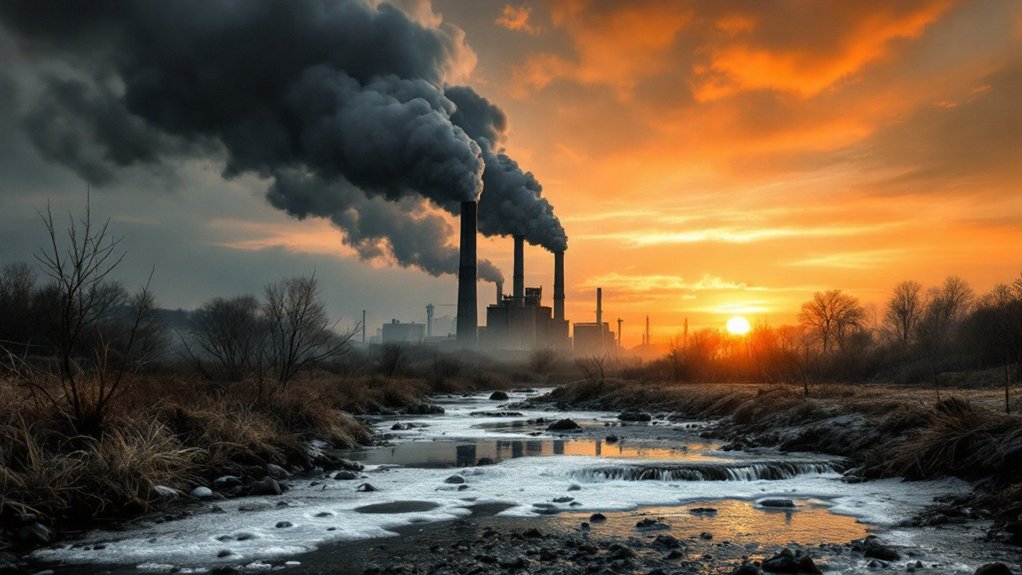
While most people recognize pollution when they see it, understanding its full impact requires a deeper look at how harmful substances enter our environment. Environmental pollution occurs when contaminants are introduced into natural surroundings at levels that disrupt ecosystems. These pollutants can come from human activities like factory emissions and car exhaust, or sometimes from natural events like volcanic eruptions.
Scientists classify pollution into several major types. Air pollution includes smog and greenhouse gases that harm breathing and warm the planet. Water pollution happens when chemicals, waste, or microorganisms contaminate lakes, rivers, and oceans. Soil pollution involves pesticides and heavy metals that damage land where food grows. Other forms include noise pollution from excessive sound, light pollution from artificial brightness at night, and the growing problem of plastic pollution in waterways.
Pollution takes many forms—from smog that chokes our cities to chemicals that poison our waters and soils.
Common pollutants affect our world in different ways. Carbon dioxide and methane trap heat in the atmosphere. Nitrogen oxides and sulfur dioxide create acid rain. Heavy metals like lead and mercury damage organs and brain development. Newer concerns include microplastics and pharmaceutical residues that enter water systems. The combustion of fossil fuels releases substantial amounts of carbon dioxide, contributing significantly to global warming and climate change.
These pollutants come from many sources in our daily lives. Industrial factories release chemicals into air and water. Vehicles emit exhaust fumes. Farms use fertilizers and pesticides that wash into streams. Even homes contribute through waste disposal and energy use. The concentration of industries due to rapid industrialisation significantly contributes to air, water, and soil pollution worldwide.
The impacts of pollution touch every part of our planet. Climate change alters weather patterns worldwide. Acid rain kills forests and fish. Chemical runoff causes algae blooms that choke lakes. Wildlife populations decline as habitats become contaminated. Among these impacts, environmental justice movement emerged as communities recognized that pollution disproportionately affects marginalized populations.
Human health suffers too. Pollution causes respiratory diseases like asthma, heart problems, and increased cancer rates. Children and elderly people often face the greatest risks.
Societies address pollution through laws that limit emissions, technologies that filter waste, and better waste management systems. Renewable energy and sustainable practices offer ways to reduce pollution at its source. Public awareness also plays a key role in creating cleaner communities.
Frequently Asked Questions
How Do Indoor Pollutants Differ From Outdoor Environmental Contaminants?
Indoor pollutants differ from outdoor contaminants in several ways.
Indoor pollutants often come from household products, building materials, and appliances, while outdoor pollutants stem from vehicles and industry.
Indoor pollutant concentrations can be 2-5 times higher than outdoor levels, sometimes reaching 100 times higher.
Indoor pollution accumulates in confined spaces, while outdoor pollution gets diluted.
Indoor sources are less regulated than outdoor emission sources.
Can Individuals Effectively Measure Pollution Levels in Their Neighborhoods?
Individuals can now measure neighborhood pollution with consumer devices. Low-cost sensors track air quality, monitoring particulate matter, CO2, and VOCs.
These tools help residents identify local pollution sources and gather data for community action. While not as precise as professional equipment, personal monitors still provide valuable information.
Users should understand device limitations and proper calibration to guarantee meaningful readings.
What Careers Focus Specifically on Environmental Pollution Prevention?
Several careers focus on environmental pollution prevention.
Environmental scientists monitor conditions and investigate pollution sources. Environmental engineers design systems to control pollution. Environmental protection technicians collect and analyze samples for contaminants. Pollution prevention specialists identify pollution sources in industrial processes and recommend reduction strategies.
These professionals work for government agencies, consulting firms, and private companies. Their salaries range from entry-level positions requiring associate’s degrees to specialists earning over $76,000 annually.
How Do Pollution Standards Vary Between Developing and Developed Countries?
Pollution standards vary greatly between nations. Developed countries typically have stricter regulations, better monitoring, and stronger enforcement.
One-third of countries worldwide lack legally-mandated air quality standards. Developing nations often struggle with limited resources, weak institutional capacity, and economic growth pressures that hinder environmental protection.
While 98% of cities in low/middle-income countries fail WHO air quality standards, developed nations generally maintain more thorough regulatory frameworks.
Which Pollution Mitigation Technologies Show the Most Promise?
The most promising pollution mitigation technologies include carbon capture systems that remove CO2 from industrial emissions.
Smart monitoring networks using IoT sensors help cities track pollution in real-time.
Renewable energy technologies, particularly solar and advanced battery storage, continue to replace fossil fuels.
Automated recycling systems and chemical recycling processes are transforming waste management.
Biodegradable materials also show potential to reduce long-term environmental damage.
